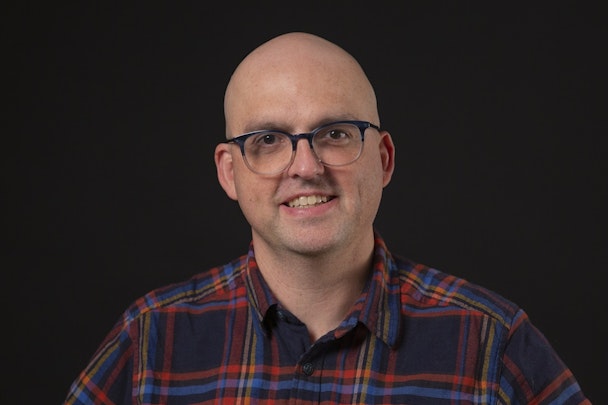What does a head of innovation actually do? Via’s Layne Harris explains
Continuing our series demystifying the industry’s myriad roles, Layne Harris tells us how he spends his time as Via’s head of innovation, from running experiments to building robots.

Layne Harris / Via
Creative storytelling that uses technology takes some hands-on disciplinary understanding to really do things well. You can walk into a room and say, ‘I want to do a virtual reality thing,’ but if you don’t understand it, your chances of success, of selling that idea, are going to be pretty low.
I spend my day in one of three buckets: coming up with new ideas, being in a team brainstorm or doing presentations for clients on their concerns around different technological changes.
Advertisement
I’m part of the creative leadership at Via. My team is really small – it’s just me. But we augment that sometimes with designers, creatives or art directors depending on the project. I’ll spearhead any project with a technological bent; I might play creative lead or partner with another member of the leadership.
We just launched a really big Roblox activation for Church & Dwight for its Arm & Hammer baking soda brand. We had a partnership opportunity to build an activation within one of the most popular Roblox worlds, Livetopia. We worked with Wavemaker, our media partner, and then it contracted yet another partner that manages the Roblox side of things. We led it; we drew up inspiration boards, mock-ups and created stuff to influence development.
Advertisement
Baking soda is a really good Stem (science, technology, engineering, mathematics) material because you can make volcanoes with it, or slime or rockets. It’s very kid-friendly. This was less about sales and more about brand affinity – and the lifecycle of consumers starts early with this brand.
So, we made a ‘mad scientist’s laboratory’ where you get to play as a scientist and do a little science as part of this role-playing game.
And when we came across certain specific technical elements we wanted, I would prototype those. We had a mad scientist’s laboratory in the project and if we wanted bubbles in the laboratory tanks, I had to go and make those and show them to the vendor.
Suggested newsletters for you
I’ve been doing this for about 20 years. And I’ve been involved with just about every tech trend you can imagine. When I started, it meant leading teams doing web development. It was a pretty strict, straightforward technology role. But I have a design degree, I do animation, I have a lot of random skills. I’m a jack-of-all-trades with an affinity for creativity.
Prior to my time at 360i [where Harris was head of innovation technology], I worked at Microsoft doing SQL server database programming. It was a technical advancement but not satisfying creatively. I was a freelance developer doing Flash work, banner ads and other things. That’s when I stepped into advertising. It exposed me to a lot more interesting people – people who pushed me creatively and challenged me.
I like doing 3D modeling, I like electronics. I do a lot of soldering, I’ve built a lot of robots. I have the philosophy that if something is new and people are talking about it, I need to stop what I’m doing and either invest time or money or both to get at least a fundamental understanding of what it is. When crypto emerged, I bought some Bitcoin. That turned out great. Later, I bought some NFTs – not so great. But it gave me an understanding of the process behind them and how complex they were for the average user. It’s about trying the tech out and being able to inform my teams with proper decision-making to really think about what we can do with it – or not.
Who has the time to do those deep dives and really understand the technology enough to talk to partners, to run prototypes, to run experiments? It’s good to have a guy like me around – a ‘let me explain it to you’ guy.
There are agencies that live without that guy. But I see a lot of failure out there because people haven’t done their due diligence and they end up in places like crypto or metaverse worlds with no players. [The Arm and Hammer work] was a metaverse activation that actually made a lot of sense and made a lot of sense with consumers. Rather than trying to build the community, which is one of the mistakes a lot of advertising makes, our job is to pay attention and see where these communities are popping up and then provide the right messaging at the right time.
